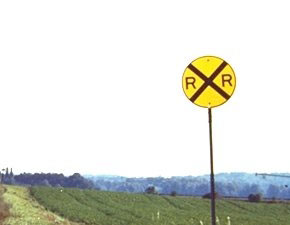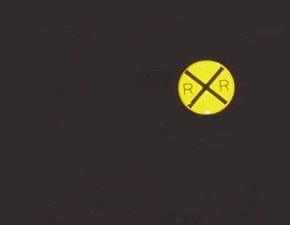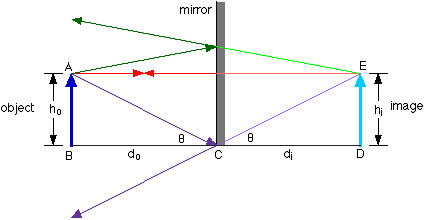We often needlessly confuse people when we use the words "Reflectivity" and "Retroreflectivity" interchangeably. In most cases, the word "reflectivity" when, in fact, "retroreflectivity", more precise, scientific meaning. In particular, Retroreflectivity is defined as the ability of a sign (for example) to redirect light back to its source (a car with headlights). The sign above is Retroreflective. In that the driver's eyes are fairly close to the car's headlights, an important portion of the light bounces off of the sign back to the driver. The sign is thus especially visible at night.
Reflective material was first invented in the 1930's by 3M in order to create a tape that could be visible at night. The idea behind the "Glass Beads Project" was to develop a material that could reflect the light off the headlights of cars, which would make the material glow. They created a product that contained thousands of reflective beads that are able rebound light, implying that if light hits one of these beads, it would simply bounce the light back out, making the tape seem "bright" at night under direct light. They soon found, however, that their new reflective tape would not stick to the pavement, and engineers conceived the idea of putting the tape on road signs, instead of simply on the road, an idea that is still in use today.
3M's interest in glass beads was a natural evolution to their start at Minnesota Mining & Manufacturing Company (e.g. the 3 "M's"). Beads were core to the original 3M and their concentration on abrasives and mining. It is a very small step to the notion of how to make beads reflective. Critical to this process was how to add a silver or mirror surface to the back of the beads. And, then, just as critical, these glass beads needed to all be oriented in the same direction (e.g. with the mirror side of the bead facing down). Randomly dispersed beads do not do the same reflective impact that an array of 'mirror-side-down' beads show. With magnets in hand and some other tricks, 3M had it's breakthrough and the first reflective films were invented. The uses of reflective material have grown ever since, and now include clothing, shoes, bicycles, as well as various types of reflective signs and tapes. Today, reflective signs are used to aware a passerby of any dangerous areas or other important information on and off the road. They are often used for road barrier, road marking, stop signs or warning signs, and it is imperative they are visible by day and by night.
The physics of reflection is relatively complex, and involves the enigmatic phenomenon of light. However, the behavior of light can be understood by a simple model of wave fronts and rays. A ray is a straight beam of light and a wave front is an undulating straight line that connects the light radiating from a similar source. While rays are the lines that emanate from the Sun in all directions, wave fronts are spheres that encircle the Sun. Rays and wave fronts are used to represent light, and are utilized to analyze how light interacts with mirrors and reflective beads.
When light hits a mirror, or even any surface, the law of reflection occurs. The law of reflection states that the angle of reflection equals the angle of incidence.

Most objects exhibit reflection on some level, but a mirror or a bead in a reflection sign reflects light very well. Because all objects in nature display irregularities or bumps on the surface, the light reflects in all directions, which is why a reflective sign is visible by a passerby wherever he or she is positioned in front of the sign.
Beads in a reflective sign can be treated as plane mirrors because they are fundamentally flat mirrors. Plane mirrors have a number of properties, including:
- The image is upright
- The image is the same size as the object
- The image and the object's distance to the mirror are the same
- The image is not a virtual, or real, image
The geometrical optics of a plane mirror involves a lot of geometry and similar triangles (triangles that are proportionate with one another). Imagine an object of a certain height (ho) placed a distance (do) from a mirror. A ray diagram, as shown below, can be used to calculate where the image of the object will be.
Following the law of reflection, the rays of light drawn from the object to the mirror (the green and purple lines) are reflected, and the image will be found where the reflected lines intersect (at pt E). As seen above, the heights of the object and image are the same as well as the distances to the mirror. In the beads of a reflective sign, this is what occurs. Although the images created by the tiny mirrors in the reflective beads are not large enough to be visible, the light that hits the mirrors are indeed reflected.
Before reflective material had been invented, it was a general rule that one had to wear white when taking jogs night, and had to be extremely careful when driving, as very few road signs could be visible in the dark. However, technology has offered the world a safer way to travel outdoors at night since reflective signs and other reflective material allow objects to be seen in an absence of sunlight. And, as manufacturers continue to develop more and more commodities that are reflective, other activities that are now exclusively for daytime will become available at night.
– Katy Brewster















